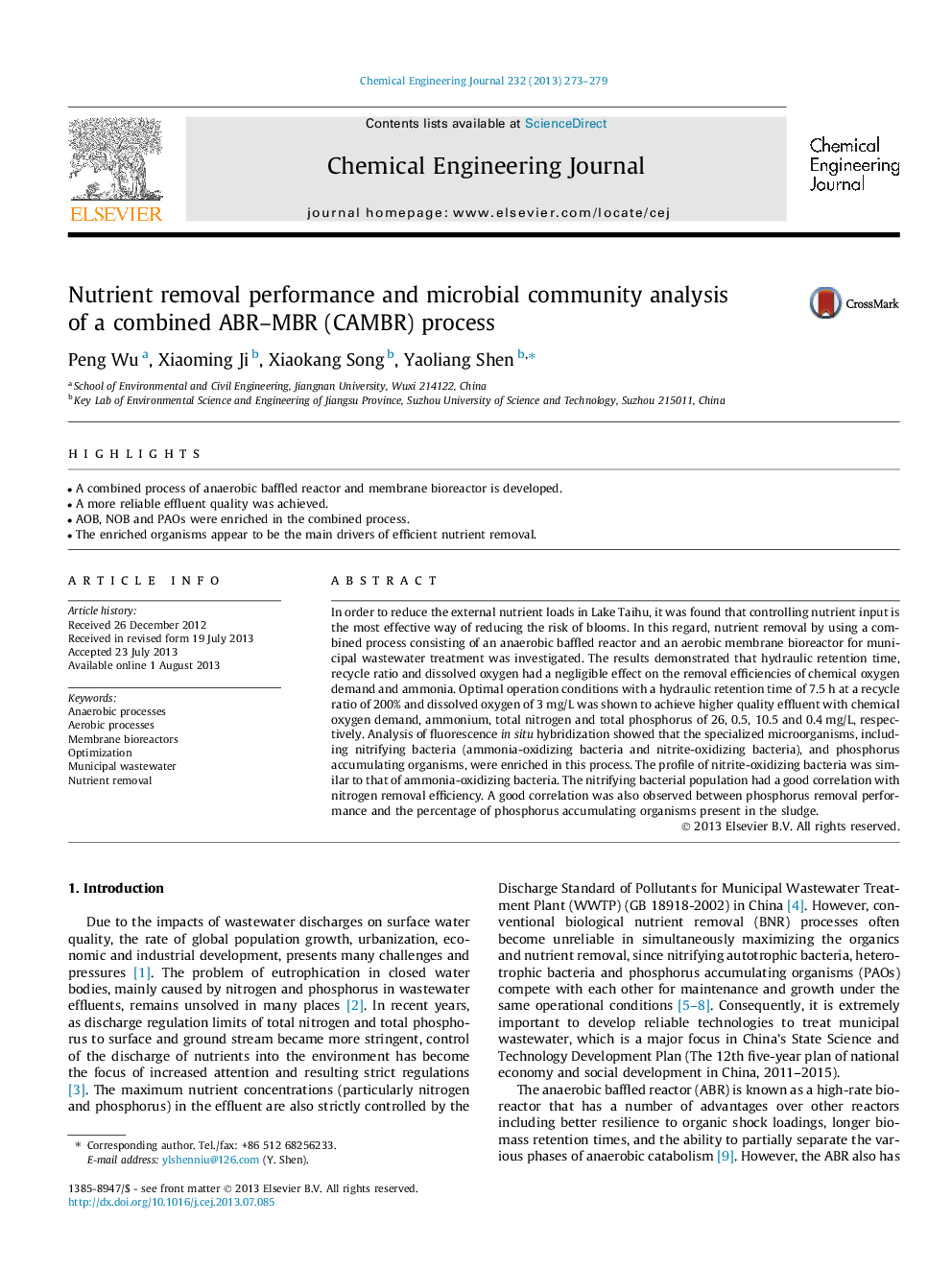| Article ID | Journal | Published Year | Pages | File Type |
|---|---|---|---|---|
| 148143 | Chemical Engineering Journal | 2013 | 7 Pages |
•A combined process of anaerobic baffled reactor and membrane bioreactor is developed.•A more reliable effluent quality was achieved.•AOB, NOB and PAOs were enriched in the combined process.•The enriched organisms appear to be the main drivers of efficient nutrient removal.
In order to reduce the external nutrient loads in Lake Taihu, it was found that controlling nutrient input is the most effective way of reducing the risk of blooms. In this regard, nutrient removal by using a combined process consisting of an anaerobic baffled reactor and an aerobic membrane bioreactor for municipal wastewater treatment was investigated. The results demonstrated that hydraulic retention time, recycle ratio and dissolved oxygen had a negligible effect on the removal efficiencies of chemical oxygen demand and ammonia. Optimal operation conditions with a hydraulic retention time of 7.5 h at a recycle ratio of 200% and dissolved oxygen of 3 mg/L was shown to achieve higher quality effluent with chemical oxygen demand, ammonium, total nitrogen and total phosphorus of 26, 0.5, 10.5 and 0.4 mg/L, respectively. Analysis of fluorescence in situ hybridization showed that the specialized microorganisms, including nitrifying bacteria (ammonia-oxidizing bacteria and nitrite-oxidizing bacteria), and phosphorus accumulating organisms, were enriched in this process. The profile of nitrite-oxidizing bacteria was similar to that of ammonia-oxidizing bacteria. The nitrifying bacterial population had a good correlation with nitrogen removal efficiency. A good correlation was also observed between phosphorus removal performance and the percentage of phosphorus accumulating organisms present in the sludge.
